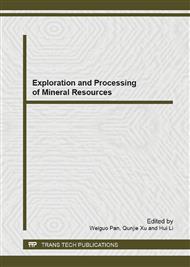p.477
p.481
p.487
p.497
p.503
p.510
p.517
p.522
p.529
Reserch on Flow Field around the Eyeholes of Perforating Completion Based on ANSYS
Abstract:
In order to study the flow field characteristics around perforating well eyeholes, using the finite element method, it utilize actual physical property, establish the geometric model, through the grid partition and post-processing, got the velocity field and pressure field cloud chart, and analysis the data of controlled, got the mobility pattern of the flow field of around eyeholes. Through three of different eyehole deep using the same physical parameters for modeling analysis, the influence of different eyehole depth of flow field around the holes is got. Through the contrast simulated results of perforating completion heat flow model with the exact solution of open hole completion, the result reveals the specialty and the regular pattern of perforating completion flow field. Meanwhile, according to the theory of water and electricity similar, the actual physical model of perforating completion electric analogue is made and actual the pressure field distribution around eyeholes is measured. The results agree with the results of ANSYS heat flow field simulation. This verify the correctness of the ANSYS analysis. Research shows that using heat flow field module of ANSYS simulation seepage field to serve research seepage field of well is a kind of general method.
Info:
Periodical:
Pages:
503-509
Citation:
Online since:
December 2013
Authors:
Price:
Сopyright:
© 2014 Trans Tech Publications Ltd. All Rights Reserved
Share:
Citation:


